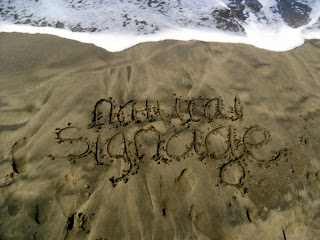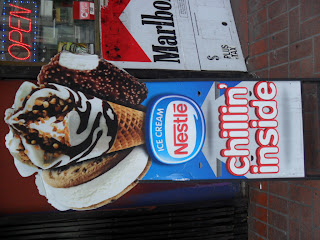Monday, December 3, 2012
Saturday, December 1, 2012
Thought Paper #10
Signage plays a major role in drawing us
towards or away from specific places or areas. If you were to walk down a
sidewalk with no sign leading you in a specific direction, you would likely
walk for a very long time without stopping. There would be nothing to grab your
attention and lead you astray. However, on the contrary, if you happened to
spot a sign for Pier 39 or Fisherman’s Wharf, you would be much more inclined
to make these tourist attractions your destination.
It seems silly that signage can play such a
major role in our every day lives, but the truth of this remains consistent. I
know from my own personal experience that a captivating sign posted on a
lamppost or store window can easily lead me astray. Signage attracting people
to tourist attractions tends to be extremely effective. Not only does it have a
purpose, but it also strives to pull people into already desirable places. Many
of us visit tourist attractions on our own without ever being drawn in by
signage. However, if we see an especially vibrant or unique piece of signage
dealing with an awesome tourist attraction, we will be much more likely to
visit. Signage also provides for society an additional way in which information
is passed from one person to another. When many people view the same signs,
they begin to talk about what they have seen. Their curiosity often drives them
to follow these signs to wherever they may lead.
Before signage, and before places were
deemed as “tourist attractions,” things were much different. In 1906, Pier 39 and Fisherman's Wharf were much different places to visit. After the massive earthquake on April 18th, much of the city was decimated, the wharf area included. I assume that visiting a place of destruction and ruins would have a much different feel to it than a tourist location. Any and all signage that had previously been in and around the area were likely gone. It wasn't just that people weren't attracted to the area due to a lack of signage, but people were probably steered away from it. Seeing your city crumble before your eyes wouldn't be the most pleasant of sights. Avoiding as much of the aftermath as possible was a likely goal of most people.
San Francisco residents and visitors found
the Golden Gate International Exposition in 1939 by word of mouth and signage
components. The exposition took place on Treasure Island, so it wasn’t exactly
in a directly and easily accessible location. However, by advertising on a
global level, this international exposition caught wind and became a huge
success. This proves the influence that signage can have on an event, even in
the most random of places.
Subscribe to:
Posts (Atom)


































